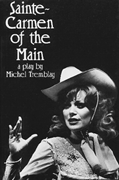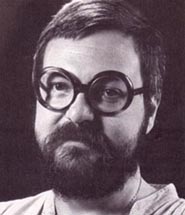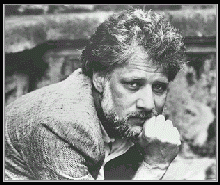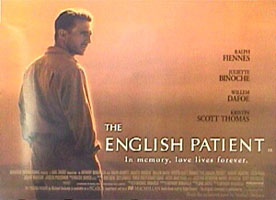|
● Introduction:
the Literature of Survival
● Native
Canadian Mythology
● Early
Colonial Literature
● The
Literature of Nation-Building
● Canada
in the Ascendant
● Canadian
Literature in the Modern World
Canadian
Literature in the Modern World
|
|
|
A Painting by Authur
Lismer
|
 Canada's
most famous and successful writers have appeared in the postwar
period. Canada itself of course finished the war as a confident,
wealthy and influential nation, and played a major role in building
postwar international institutions. Canadian
nationhood was no longer in doubt from an outside perspective, but
from the inside the nature of that nation and the strength of its
institutions remained somewhat in question. Ethnic, region
and gender were the topics Canadian literature investigated
in a process of self-analysis. A description of some of the
best known of these writers follows. Canada's
most famous and successful writers have appeared in the postwar
period. Canada itself of course finished the war as a confident,
wealthy and influential nation, and played a major role in building
postwar international institutions. Canadian
nationhood was no longer in doubt from an outside perspective, but
from the inside the nature of that nation and the strength of its
institutions remained somewhat in question. Ethnic, region
and gender were the topics Canadian literature investigated
in a process of self-analysis. A description of some of the
best known of these writers follows.
 Margaret
Laurence was born in Manitoba but spent many years living
in Africa, and began writing there. Her ideas were shaped
by the political environment she found there, and the position of
women in such societies. This experience also gave her a sense of
her own cultural "difference" from the culture she found
herself in. This idea of a "difference" which must be
respected between peoples, races, regions, the sexes, generations
is a powerful one in her work, and makes her highly representative
of contemporary Canada with its emphasis
on "multiculturalism". When she returned to Canada she
wrote a series of books set in the fictional
small town of Manawaka in Manitoba. Her 1974 novel in this series,
The Diviners, tells of the reconciliation
between a middle aged woman, her lower—class adoptive
parents, her grown-up child, her estranged
husband and her French/native American lover. Across the series
Laurence effectively portrays the arrival of successive
waves of settlers: Native, Scots, English, Irish, Ukrainian,
Asian, thus
challenging the emphasis of Canadian culture on dealing with the
"two solitudes"
(French
and English) and emphasizing instead a more complicated mix of cultures. Margaret
Laurence was born in Manitoba but spent many years living
in Africa, and began writing there. Her ideas were shaped
by the political environment she found there, and the position of
women in such societies. This experience also gave her a sense of
her own cultural "difference" from the culture she found
herself in. This idea of a "difference" which must be
respected between peoples, races, regions, the sexes, generations
is a powerful one in her work, and makes her highly representative
of contemporary Canada with its emphasis
on "multiculturalism". When she returned to Canada she
wrote a series of books set in the fictional
small town of Manawaka in Manitoba. Her 1974 novel in this series,
The Diviners, tells of the reconciliation
between a middle aged woman, her lower—class adoptive
parents, her grown-up child, her estranged
husband and her French/native American lover. Across the series
Laurence effectively portrays the arrival of successive
waves of settlers: Native, Scots, English, Irish, Ukrainian,
Asian, thus
challenging the emphasis of Canadian culture on dealing with the
"two solitudes"
(French
and English) and emphasizing instead a more complicated mix of cultures.
 Alice
Munro (1931-) is one of the best Canadian novelists and short—story
writers. Her first collection of short stories, Dance of the
Happy Shades, appeared in 1968. Now she is till active in her
writing career. Her latest book, Hateship, Friendship, Courtship,
Loveship, Marriage was published in 2001 and was a great success.
Munro was born and brought up in a small town in Ontario, a farming
district not far from Lake
Huron. She began publishing short stories about that
part of the country while she was still a student at the University
of Western Ontario. Her novel Lives of Girls and Women was
published in 1971, followed by her second collection of short storied,
Something I've Been Meaning to Tell You in 1974. Since then
her short fiction has appeared even more widely in Canada and the
United States. She publishes regularly in the New
Yorker. The strength of her fiction arises partially
from its vivid sense of regional focus, most of her stories being
set in Huron County, Ontario. Her theme has often been the dilemmas
of the adolescent girl coming to terms with family and small town.
Her more recent work has addressed
the problems of middle age, of women alone and of the elderly. Characteristic
of her style is the search for some revelatory
gesture
by
which an event is illuminated
and
given personal significance. The two collections of stories,
Friend of My Youth (1990) and Open Secrets (1994),
have shown her continuing development as a writer and have extended
her fame far beyond Canada's borders. Alice
Munro (1931-) is one of the best Canadian novelists and short—story
writers. Her first collection of short stories, Dance of the
Happy Shades, appeared in 1968. Now she is till active in her
writing career. Her latest book, Hateship, Friendship, Courtship,
Loveship, Marriage was published in 2001 and was a great success.
Munro was born and brought up in a small town in Ontario, a farming
district not far from Lake
Huron. She began publishing short stories about that
part of the country while she was still a student at the University
of Western Ontario. Her novel Lives of Girls and Women was
published in 1971, followed by her second collection of short storied,
Something I've Been Meaning to Tell You in 1974. Since then
her short fiction has appeared even more widely in Canada and the
United States. She publishes regularly in the New
Yorker. The strength of her fiction arises partially
from its vivid sense of regional focus, most of her stories being
set in Huron County, Ontario. Her theme has often been the dilemmas
of the adolescent girl coming to terms with family and small town.
Her more recent work has addressed
the problems of middle age, of women alone and of the elderly. Characteristic
of her style is the search for some revelatory
gesture
by
which an event is illuminated
and
given personal significance. The two collections of stories,
Friend of My Youth (1990) and Open Secrets (1994),
have shown her continuing development as a writer and have extended
her fame far beyond Canada's borders.
 Margaret
Atwood, with whose views on Canadian literature we began this chapter,
is the most successful and internationally recognized of current
Canadian novelists. Perhaps her best-known novel is The Handmaid's
Tale (1985), a fantasy set in the future in which women have
lost all political rights and become the possessions of men,
valued only for their ability to bear children. Those fertile
women are known as "handmaids". The novel tells
the story of one such "handmaid" called "Offered"
(property of Fred) who rebels against the system. Margaret
Atwood, with whose views on Canadian literature we began this chapter,
is the most successful and internationally recognized of current
Canadian novelists. Perhaps her best-known novel is The Handmaid's
Tale (1985), a fantasy set in the future in which women have
lost all political rights and become the possessions of men,
valued only for their ability to bear children. Those fertile
women are known as "handmaids". The novel tells
the story of one such "handmaid" called "Offered"
(property of Fred) who rebels against the system.
 Mordecai
Richler grew up in Montreal's Jewish community, part of
the complex ethnic geography of Canada's second biggest city, with
its wealthy English—dominated business community, its numerically
dominant French Catholic community, as well as many other groups.
His novel The Apprenticeship of Duddy Kravitz (1959) thought
to be among his best, is a highly critical view of Montreal society
in which his hero,
Duddy Kravitz, cheats his way to success. As an English—speaking
Jew, Richler has been very critical of the Quebec independence movement,
feeling that it ignores the fact that not all Quebecois are French
or French—speaking. Mordecai
Richler grew up in Montreal's Jewish community, part of
the complex ethnic geography of Canada's second biggest city, with
its wealthy English—dominated business community, its numerically
dominant French Catholic community, as well as many other groups.
His novel The Apprenticeship of Duddy Kravitz (1959) thought
to be among his best, is a highly critical view of Montreal society
in which his hero,
Duddy Kravitz, cheats his way to success. As an English—speaking
Jew, Richler has been very critical of the Quebec independence movement,
feeling that it ignores the fact that not all Quebecois are French
or French—speaking.
|
|
 |
 |
|
Mordecai Richler
|
Sainte-Carmen
of the Main |
Michel Tremblay
|
 Michel
Tremblay’s work derives
from the same Montreal setting as Richler's, but from the French
perspective. His 1976 play, Sainte Carmen de La Main (Saint
Carmen of the Main) tells the story of a pop
singer trying to gain success on a Montreal street known
as "The Main", with a reputation for low-class nightlife. Michel
Tremblay’s work derives
from the same Montreal setting as Richler's, but from the French
perspective. His 1976 play, Sainte Carmen de La Main (Saint
Carmen of the Main) tells the story of a pop
singer trying to gain success on a Montreal street known
as "The Main", with a reputation for low-class nightlife.
 |
|
Michael
Ondaatje
|
 Michael
Ondaatje was born in Sri
Lanka, went to school in England and moved to Canada
as a young man. He first found success as poet. Among his poetry
is The Collected Works of Billy the Kid, an innovative
retelling of the story of the American outlaw
of the Old West, William Bonny. But he is now best-known as novelist,
particularly for The English Patient, a novel set in the
countries around the Mediterranean during the Second World War,
telling the story of desert
romance from the perspective of the terribly injured
"English patient" of the title. This was made into a phenomenally
successful film in 1997. Michael
Ondaatje was born in Sri
Lanka, went to school in England and moved to Canada
as a young man. He first found success as poet. Among his poetry
is The Collected Works of Billy the Kid, an innovative
retelling of the story of the American outlaw
of the Old West, William Bonny. But he is now best-known as novelist,
particularly for The English Patient, a novel set in the
countries around the Mediterranean during the Second World War,
telling the story of desert
romance from the perspective of the terribly injured
"English patient" of the title. This was made into a phenomenally
successful film in 1997.
|

|
|
|
The
Egnlish Patient
|
The
English Patient
|
 One
of the biggest selling authors in Canada is Farley
Mowat. His adventure stories for older children introduce
many Canadians to the wilder parts of their country (the vast majority
of Canadians live in cities in the south). His novel Lost in the
Barrens tells the story of two children, one a white boy of Scottish
descent,
one a Native Canadian, who become lost in the northern wilderness,
but through determination and by using all their knowledge of the
north they survive the winter and make their way back to safety.
With
their technical details of survival techniques and wilderness travel,
and their insight into the natural world, Mowat's exciting books
initiate
many
Canadians into the idea that life is a struggle to survive. One
of the biggest selling authors in Canada is Farley
Mowat. His adventure stories for older children introduce
many Canadians to the wilder parts of their country (the vast majority
of Canadians live in cities in the south). His novel Lost in the
Barrens tells the story of two children, one a white boy of Scottish
descent,
one a Native Canadian, who become lost in the northern wilderness,
but through determination and by using all their knowledge of the
north they survive the winter and make their way back to safety.
With
their technical details of survival techniques and wilderness travel,
and their insight into the natural world, Mowat's exciting books
initiate
many
Canadians into the idea that life is a struggle to survive.
Previous Page Next
Page
|

